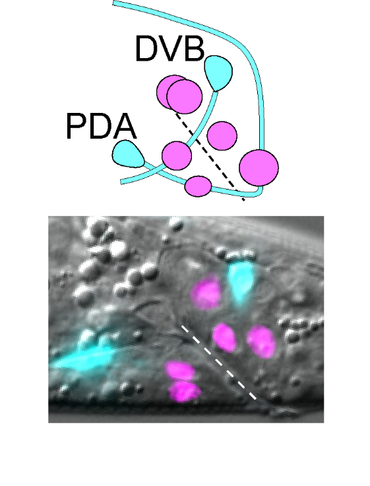Does dividing change a cell's chances of being reprogrammed?
Transdifferentiation is the conversion of one fully differentiated cell type into another. In a study published in Cell Reports, scientists investigate the mechanisms that may be involved in natural transdifferentiation in the worm C. elegans using single-cell models with or without division. They show how division can impact the reprogramming mechanism and how certain factors conserved in the animal kingdom influence these different transdifferentiations.

Transdifferentiation, or direct cellular reprogramming, is the direct conversion of one fully differentiated cell type into another. It is not yet known whether the fundamental mechanisms are shared between the different transdifferentiation events that can occur naturally in the presence or absence of cell division. Natural transdifferentiation of rectal Y cell to PDA motor neuron in Caenorhabditis elegans occurs without cell division and requires orthologs of vertebrate reprogramming factors.
In this study, scientists examine a second natural transdifferentiation that gives rise to the DVB motor neuron from the rectal K cell following cell division. They show that the factors SEM-4/SALL, SOX-2, CEH-6/POU required for reprogramming rectal cell Y into PDA neuron are also crucial for transdifferentiation of K into DVB. Furthermore, cell division is necessary but not sufficient for this event, while Wnt signaling plays distinct functions during the process, including selection of the daughter cell with a different fate, loss of rectal identity, and imposition of the specific neuronal subtype identity. Wnt signaling and the reprogramming factors SEM-4/SALL, SOX-2, CEH-6/POU act in parallel for the erasure of rectal identity.
Beyond clarifying the steps and mechanism common to different transdifferentiation events, the results establish a model integrating SOX-2 and POP-1/TCF antagonistic activities as well as the decrease in SOX-2 levels over time to provide a timer for final identity acquisition.
Two transdifferentiations occurring naturally in the rectum of the C. elegans worm give rise to the PDA and DVB motor neurons. In the case of DVB, it involves cell division. The Wnt signal selects the daughter cell that transdifferentiates into DVB, then conserved plasticity factors act in parallel to Wnt to erase the initial identity. Finally, a change in stoichiometry between SOX-2 and the effector of the Wnt pathway seems to control the timing of redifferentiation into DVB motoneurons.
